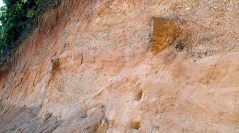

 Geodiversitas
38 (2) - Pages 175-195
Geodiversitas
38 (2) - Pages 175-195The Istanbul region is a part of a bigger continental fragment called the Rhodope-Pontide Fragment. Within this continental fragment, the Istanbul Zone consists, at the base, of a Neoproterozoic middle to high-grade crystalline rocks with relicts of volcanic arc and continental crust, which are not observed in Istanbul itself, but farther east near Zonguldak. This basement is overlain by a continuous, well-developed sedimentary sequence extending from the Lower Ordovician to the Lower Carboniferous. The Carboniferous flysch marks the progress of a shortening event. This event led to the folding and faulting of the Palaeozoic sequence which was intruded by an uppermost Permian granitoid and unconformably overlain by the Upper Permian to Lower Triassic red sandstones and conglomerates. The Triassic series is better formed east of Istanbul showing a typical transgressive development. The Jurassic sequence is absent, most likely as a result of the closure of the Palaeo-Tethys and the resultant generation of the Cimmerides. There is a small outcrop of Lower Cretaceous shallow marine sedimentary rocks and a much more widespread Upper Cretaceous-Lower Eocene clastic, carbonate and andesitic volcanic rocks unconformably covering the Palaeozoic, Triassic and Lower Cretaceous rocks. The pre-Bartonian closure of the Intra-Pontide suture along the Istanbul Zone as a consequence of its collision with the Sakarya Continent created another episode of shortening in this area, an event that was part of the Alpide evolution. The Intra-Pontide suture is the boundary between the Istanbul and Sakarya magmatic arcs in northwestern Turkey. During the Cainozoic, the first post-orogenic structures are Lutetian-Bartonian nummulitic limestones, which themselves are covered by a Paratethyan sequence of Miocene limestones and sandstones of mainly the Vallesian Stage, which include the Küçükçekmece vertebrate bearing horizon. The Pliocene is entirely fluviatile terrestrial clastics. The Pleistocene was deposited on an erosion surface which later became warped and into which the originally fluvial valley of the Bosphorus was entrenched. This valley was invaded by the Sea during the Holocene and caused the refilling of the Black Sea.
Istanbul, Küçükçekmece, geological context, Paratethys, Vallesian, stratigraphy